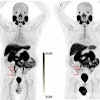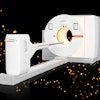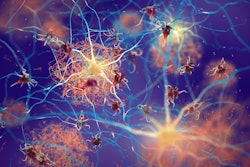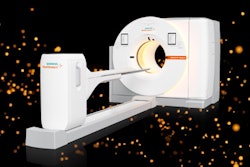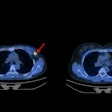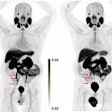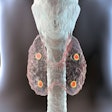Combining diagnostic information taken from an amyloid PET scan and an FDG-PET scan can predict the short-term progression in patients from mild cognitive impairment (MCI) to Alzheimer's disease, researchers have reported.
The results are from a study involving patients who were assessed for MCI at a memory clinic and were found to have positive signs of disease on both scans that progressed faster to Alzheimer’s disease, noted lead author Beatriz Echeveste, MD, of the Clínica Universidad de Navarra in Madrid, and colleagues.
“Among patients with amnestic MCI, those with a positive Amyloid-PET and an [Alzheimer's disease] pattern on FDG-PET progressed to dementia significantly earlier versus those with a positive amyloid-PET only,” the group wrote. The study was published April 21 in the European Journal of Nuclear Medicine and Molecular Imaging.
Amnestic MCI primarily affects memory and is considered a precursor to Alzheimer’s disease. Predicting the progression of the disease is important for effective medical care and treatment planning, the authors explained.
PET is an essential tool for identifying and monitoring pathological changes within the brain in patients, with amyloid PET scans used to detect beta-amyloid deposits associated with the disease and F-18 FDG PET scans used to identify patterns of hypometabolism associated with the disease, they noted.
While previous studies have primarily focused on the individual utility of each imaging technique, emerging evidence suggests that using them in combination can improve short‐term prognostic accuracy, they added.
Thus, to further explore a combined approach, the researchers retrospectively analyzed imaging scans from 145 patients with MCI who underwent both scans for diagnostic purposes over a period from October 2013 to March 2021.
At baseline, 67.6% of patients were amyloid-positive, while 44.3% showed an Alzheimer’s disease hypometabolism pattern. The conversion in patients from MCI to Alzheimer’s disease occurred in patients over a global mean time of 40 months.
At years one and four, amyloid PET demonstrated a sensitivity of 100% and 94.7%, as well as a negative predictive value of 100% and 88.2% for predicting conversion from MCI to Alzheimer’s disease dementia. At years one and four, FDG-PET exhibited a negative predictive value of disease progression of 94.6% and 87.3%.
 Representative Z-score maps derived from amyloid-PET and FDG-PET imaging across four biomarker-defined AT(N) groups: amyloid-PET positive/FDG-PET positive (A + N+), amyloid-PET positive/FDG-PET negative (A + N–), amyloid-PET negative/FDG-PET positive (A–N+), and amyloid-PET negative/FDG-PET negative (A–N–). Sagittal brain views show cortical amyloid burden (left column) and glucose hypometabolism (right column). Z-scores were computed using a normative database of cognitively unimpaired individuals. Increased amyloid uptake (Z > 2) is shown in red-white hues, while reduced FDG uptake (Z < − 2) is represented in blue. All images were spatially normalized to MNI space and visualized using a standard intensity scale. Image and caption available for republishing under Creative Commons license (CC BY 4.0 DEED, Attribution 4.0 International) and courtesy of the European Journal of Nuclear Medicine and Molecular Imaging.
Representative Z-score maps derived from amyloid-PET and FDG-PET imaging across four biomarker-defined AT(N) groups: amyloid-PET positive/FDG-PET positive (A + N+), amyloid-PET positive/FDG-PET negative (A + N–), amyloid-PET negative/FDG-PET positive (A–N+), and amyloid-PET negative/FDG-PET negative (A–N–). Sagittal brain views show cortical amyloid burden (left column) and glucose hypometabolism (right column). Z-scores were computed using a normative database of cognitively unimpaired individuals. Increased amyloid uptake (Z > 2) is shown in red-white hues, while reduced FDG uptake (Z < − 2) is represented in blue. All images were spatially normalized to MNI space and visualized using a standard intensity scale. Image and caption available for republishing under Creative Commons license (CC BY 4.0 DEED, Attribution 4.0 International) and courtesy of the European Journal of Nuclear Medicine and Molecular Imaging.
Taking both tests together, the time to conversion was faster in patients with positive amyloid PET and FDG-PET scans (27.8 months) versus those with positive amyloid PET scans and negative FDG-PET scans (37.4 months), the researchers reported.
“The use of both biomarkers during the initial diagnostic process can aid clinicians in predicting short-term progression to Alzheimer's disease,” the group wrote.
Ultimately, based on the findings, the authors recommend ordering both tests early to help prognosticate patients in terms of their likelihood of early conversion to dementia.
“This longitudinal study of nearly eight years demonstrates the utility of amyloid-PET and FDG-PET biomarkers in clinical practice among patients with [amnestic] MCI for the early prediction of progression to [Alzheimer’s disease] dementia,” the group concluded.
The full study is available here.



